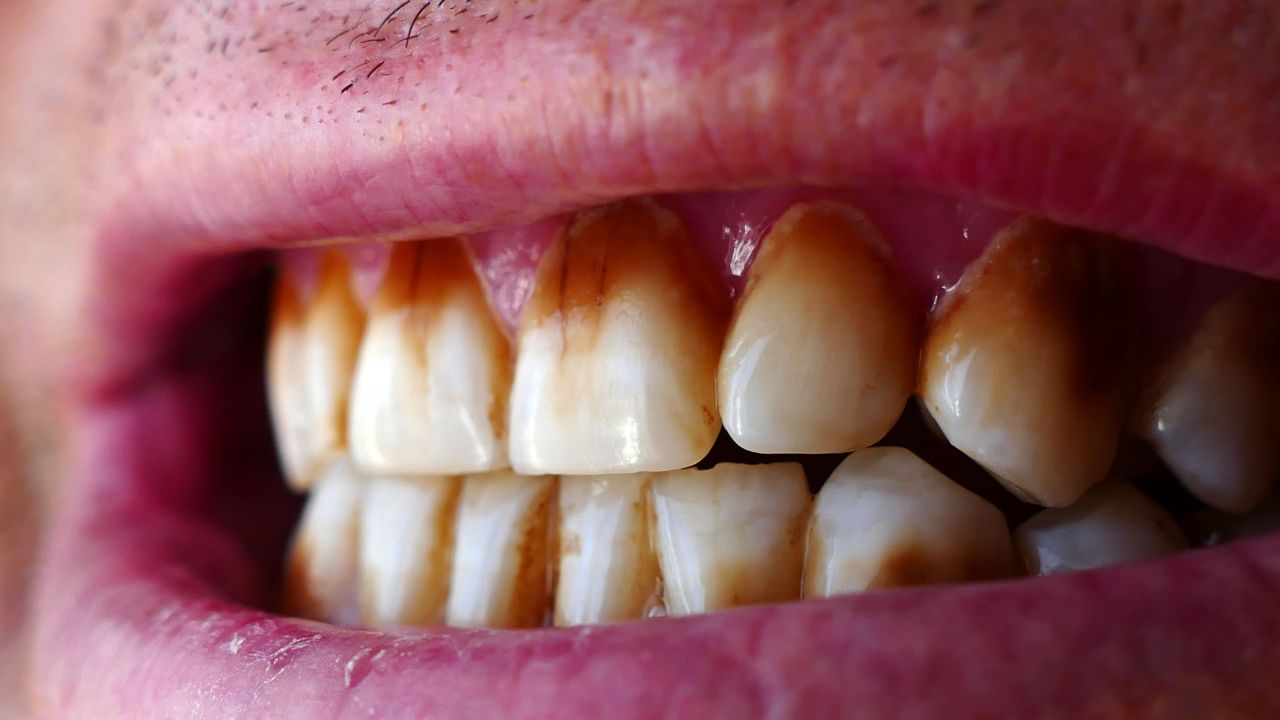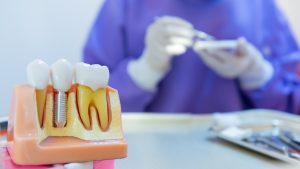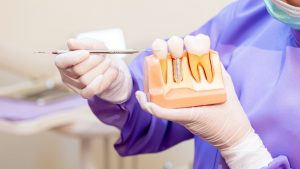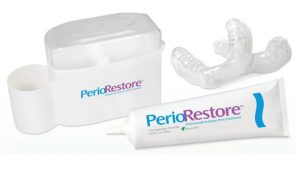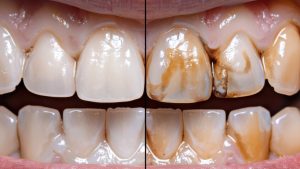Cigarette smoking is harmful to your overall health and significantly affects your oral health. Over time, the chemicals in tobacco products cause unsightly stains and a buildup of tar on your teeth.
The yellow or brown discoloration commonly seen on smokers’ teeth results from nicotine and tar, which can become deeply embedded in tooth enamel. This staining affects the appearance of your smile and contributes to other oral health problems, such as gum disease, cavities, and even oral cancer.
Targeted measures are necessary to restore the appearance of your smile and protect your oral health once stains and tar have built up. This article explores various methods to remove cigarette stains and tar buildup that can help keep your teeth clean, healthy, and bright.
What Causes Cigarette Stains and Tar Buildup on Teeth?
Cigarette stains and tar buildup on your teeth are primarily caused by two substances found in tobacco: tar and nicotine. When you smoke, these chemicals are released into your mouth and come in contact with your teeth.
- Nicotine, though colorless in its pure form, reacts with oxygen and turns yellowish when it hits your tooth enamel. This yellowish tint can easily become visible over time, especially with frequent smoking.
- Tar, a sticky, dark substance, adheres to your teeth and gradually builds up with each cigarette smoked. It sticks to the surface of your enamel and can darken over time, resulting in brown or even black discoloration.
The combination of nicotine and tar binds to the tooth enamel, making the stains incredibly stubborn and difficult to remove with basic brushing alone. These substances penetrate the enamel, which is the outer protective layer of the tooth, causing long-term staining that worsens with continued exposure to tobacco.
Other Contributing Factors
Additionally, smoking affects your mouth in other ways that can contribute to oral health issues.
Impact on Gum Health:
Smoking reduces blood flow to your gums, leading to a higher risk of gum disease, including gingivitis and periodontitis. Inflamed gums may recede, exposing more of the tooth’s surface to stains and bacteria. This gum damage can also make it harder for your body to fight plaque and tartar buildup, further exacerbating staining.
If you’re experiencing gum inflammation or concerned about your gum health, MySmile Dental Care offers expert gum disease treatments that can help manage and prevent these issues.
Dry Mouth and Reduced Saliva Production:
Smoking reduces saliva flow, which is vital for cleaning the teeth and neutralizing acids in the mouth. Saliva helps to wash away food particles and bacteria, but with reduced saliva, the mouth becomes drier, making it more prone to the buildup of plaque and stains.
This dryness, often referred to as “cottonmouth,” not only increases the risk of stains but also creates an environment where bacteria thrive, leading to further oral health complications.
Best Practices for Removing Cigarette Stains and Tar from Teeth
At-Home Solutions
Let’s explore some of the most popular at-home techniques, their benefits, and potential drawbacks to help you decide what works best for your needs.
Brushing with Baking Soda or Activated Charcoal
Baking soda is mildly abrasive, which helps scrub away surface stains from your teeth. Its slightly gritty texture gently polishes the teeth and removes superficial discoloration, making it an effective, low-cost option for those looking to brighten their smile.
Activated charcoal is another popular remedy for teeth whitening. It works by binding to toxins and particles on your teeth, helping to absorb stains and toxins. When applied properly, it may reduce some surface stains caused by smoking. However, its abrasive nature can wear down tooth enamel if used too frequently, so it’s best to use it sparingly.
- Pros: Both methods are affordable and easy to incorporate into your daily routine. They may help to lighten stains and improve the overall appearance of your smile.
- Cons: Neither method is a solution for deep-set stains or tar buildup. Overuse of activated charcoal can also lead to enamel erosion, which may lead to more serious dental problems in the long run.
Whitening Toothpaste
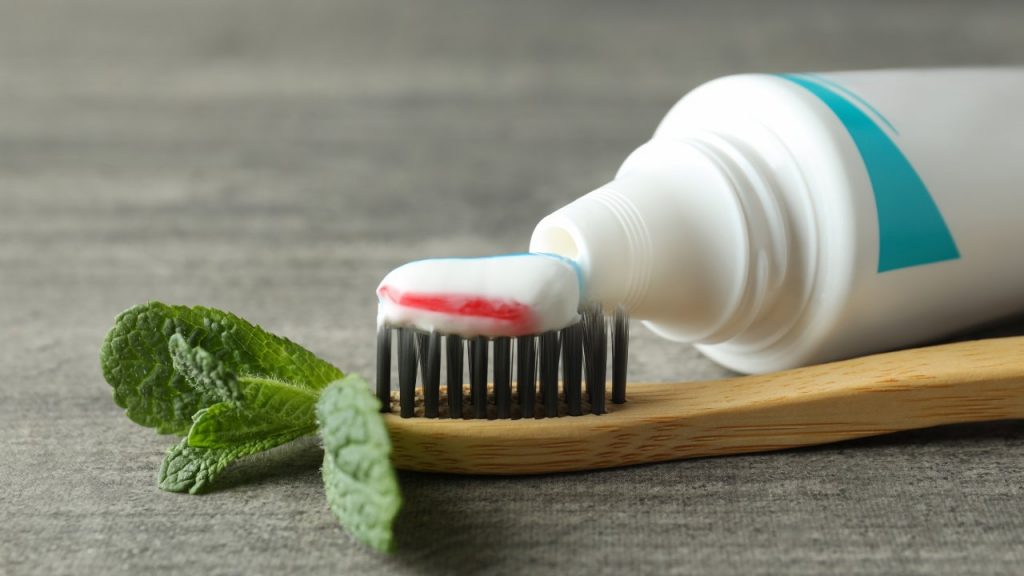
Whitening toothpaste is another commonly used method for tackling tobacco stains. These toothpastes often contain mild abrasives and chemical agents that work to remove surface stains and prevent new stains from forming. Some also contain hydrogen peroxide, which helps to break down staining molecules.
- Best Options: Look for toothpastes that are specifically labeled for removing stains or providing whitening benefits. Be sure the toothpaste is gentle enough not to damage enamel, yet effective in targeting tobacco stains.
- What to Look For: Choose toothpastes with fluoride for added protection, and make sure they have the American Dental Association (ADA) Seal of Acceptance to ensure safety and effectiveness.
Hydrogen Peroxide Rinse
Hydrogen peroxide is a well-known antiseptic, and when diluted, it can also help whiten teeth. Rinsing with a mild hydrogen peroxide solution (usually mixed with water in a 1:1 ratio) can help lighten stains and also disinfect the mouth by killing harmful bacteria.
How It Works:
Hydrogen peroxide breaks down into water and oxygen, and its oxygen molecules can help break apart the stain particles on your teeth. Additionally, its antimicrobial properties can reduce plaque buildup and improve oral hygiene.
- Pros: A cost-effective solution that can help with both stain removal and oral health maintenance.
- Cons: Overuse can irritate the gums or cause sensitivity, so it’s important to dilute the solution and not use it too frequently.
Oil Pulling (Coconut Oil)
Oil pulling is an ancient Ayurvedic practice that involves swishing oil in your mouth to help remove toxins and improve oral health. Coconut oil is one of the most popular oils used in oil pulling due to its natural antibacterial properties and pleasant taste.
Oil pulling may help reduce plaque buildup and prevent stains from setting in by gently pulling toxins from your mouth. The lauric acid in coconut oil can also help reduce harmful bacteria and promote overall oral health. By swishing the oil around your mouth for 10–20 minutes, the oil “pulls” debris and bacteria from between your teeth and gums.
- Pros: Natural and non-abrasive, oil pulling can help reduce plaque and bacteria over time.
- Cons: Oil pulling is not a quick solution and can take a long time to show noticeable results. It’s best used as a supplement to regular brushing rather than a replacement.
Professional Treatments to Remove Cigarette Stains and Tar
While at-home remedies can provide some improvement, professional treatments offer the most effective and long-lasting solutions for removing cigarette stains and tar buildup. These treatments are designed to tackle deeper stains and tartar that may not be easily removed through regular brushing. Here’s an overview of some of the most popular professional treatments available:
Teeth Whitening Treatments
For those looking for significant stain removal, in-office teeth whitening treatments are a highly effective solution. These treatments use professional-grade products and equipment that are not available in over-the-counter whitening kits.
Zoom Whitening:
One of the most popular in-office whitening treatments, Zoom Whitening uses a special light to activate a bleaching gel applied to the teeth. This process can lighten teeth by several shades in just one session, effectively removing stubborn cigarette stains and other deep discoloration. It’s a fast and highly efficient way to restore a brighter smile.
Laser Whitening:
Similar to Zoom Whitening, laser whitening involves applying a bleaching agent to the teeth and then using a laser to accelerate the whitening process. The laser helps the gel penetrate the enamel more effectively, providing faster and more dramatic results compared to home treatments.
Dental Cleanings
Professional dental cleanings are another essential component of maintaining oral health and removing tobacco stains. During a cleaning, your dentist or hygienist will use specialized tools to remove plaque, tartar, and surface stains that regular brushing can’t reach.
Scaling and Polishing:
Scaling is the process of removing hardened tartar (calculus) from your teeth, which can build up from smoking. Polishing follows scaling and helps remove surface stains, leaving your teeth feeling smooth and looking cleaner.
Veneers and Bonding
For those who have severe staining or damage that cannot be addressed with whitening treatments, veneers or bonding may be an effective solution.
Veneers:
Dental veneers are thin shells made of porcelain or composite resin that are placed over the front of the teeth to cover stains, chips, or cracks. Veneers can completely mask severe discoloration caused by tobacco use and give you a bright, uniform smile. They are custom-made to fit each tooth and can last for many years with proper care.
Bonding:
Dental bonding involves applying a tooth-colored resin to the surface of the teeth to correct stains, chips, or minor imperfections. This option is less invasive and more affordable than veneers but may not last as long.
When to Consider Veneers or Bonding:
If your teeth are heavily stained, damaged, or misshapen from years of smoking and whitening treatments are no longer effective, veneers or bonding can offer a permanent and cosmetic solution. These treatments restore the appearance of your smile and can significantly boost your confidence.
Conclusion
Cigarette stains and tar buildup can have a significant impact on both the appearance and health of your teeth and gums. While at-home remedies can help improve surface stains, professional treatments offer the most effective and long-lasting results for tackling deep discoloration and tar accumulation.
By combining good oral hygiene practices with professional care, you can maintain a brighter, healthier smile and reduce the risks associated with tobacco use. If you’re concerned about the effects of smoking on your teeth, it’s always a good idea to consult with a dentist for personalized advice and treatment options.

